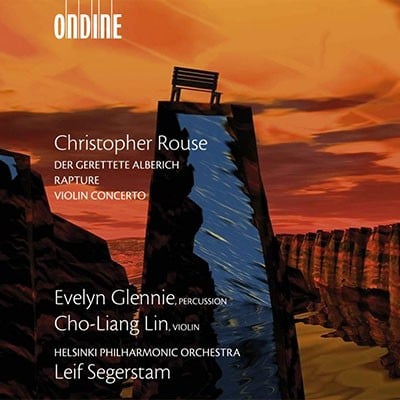3.3.3.3-4.4.4.1-timp(2).perc(3):BD/5tgl/tam-t/chinese cym/susp.cym/chimes/glsp/ant. cym-harp-strings
Abbreviations (PDF)
Boosey & Hawkes (Hendon Music)
I completed Rapture at my home in Pittsford, New York on January 9, 2000. Commissioned by the Pittsburgh Symphony Orchestra, it is dedicated to that orchestra's music director, Mariss Jansons.
It should be noted that the title of this score is not The Rapture; the piece is not connected to any specific religious source. Rather, I used the word "rapture" to convey a sense of spiritual bliss, religious or otherwise. With the exception of my Christmas work, Karolju, this is the most unabashedly tonal music I have composed. I wished to depict a progression to an ever more blinding ecstasy, but the entire work inhabits a world devoid of darkness—hence the almost complete lack of sustained dissonance. Rapture also is an exercise in gradually increasing tempi; it begins quite slowly but, throughout its eleven-minute duration proceeds to speed up incrementally until the breakneck tempo of the final moments is reached. Although much of my music is associated with grief and despair, Rapture is one of a series of more recent scores—such as Compline (1996), Kabir Padavali (1997), and Concert de Gaudí (1998)—to look "towards the light."
The work is scored for an orchestra of three flutes, three oboes, three c1arinets, three bassoons, four horns, four trumpets, four trombones, tuba, harp, timpani (two players), percussion (3 players), and strings. The percussion battery consists of bass drum, five triangles, tam-tam, Chinese cymbal, suspended cymbal, chimes, glockenspiel, and antique cymbals.
— Christopher Rouse
Reproduction Rights:
This program note may be reproduced free of charge in concert programs with a credit to the composer.

Helsinki Philharmonic / Leif Segerstam
Ondine ODE 1016-2

